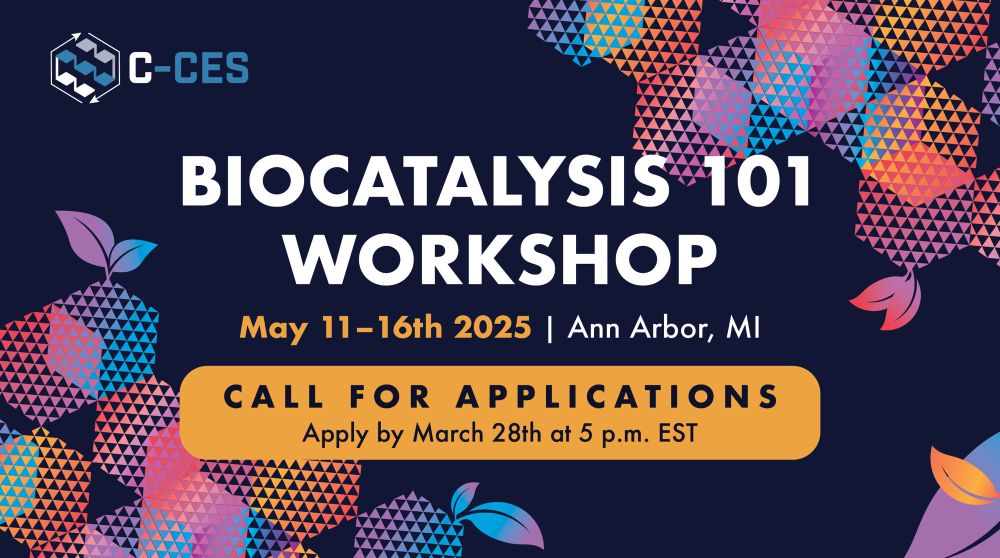
CATNIP for the win! Read our newest work with the Gomes group- doi.org/10.1038/s415...
@gabegomes.bsky.social @alisonnarayan.bsky.social @aepaton.bsky.social
01.10.2025 17:22 — 👍 2 🔁 1 💬 0 📌 0

Abstract representation of the connections between chemical space and protein space
A team from @umich.edu and @cmu.edu has developed CATNIP for chemists — a data-driven open-access platform that removes a major barrier to wider adoption of #biocatalysis, making greener chemistry more accessible.
Read more: myumi.ch/dgp2Z
@narayanlab.bsky.social
@alisonnarayan.bsky.social
01.10.2025 15:15 — 👍 0 🔁 1 💬 0 📌 0


Ryan passed his candidacy exam! PLP for the win 🤩
#Biocat #GoBlue
09.05.2025 19:04 — 👍 3 🔁 0 💬 0 📌 0


Yesterday our PLP queen became a PhD candidate! Congratulations Maddie on a fantastic gateway exam!
#PLP #Biocats #GoBlue
03.04.2025 14:15 — 👍 5 🔁 0 💬 0 📌 0

The application deadline has been extended to April 11th! For more information on the workshop look here - sites.google.com/umich.edu/cc...
28.03.2025 19:42 — 👍 0 🔁 0 💬 0 📌 0
Today is the last day to apply!
#Biocats #GoBlue
28.03.2025 14:59 — 👍 0 🔁 0 💬 1 📌 0

Chemists create matchmaking app for biocatalysis
Machine learning model Catnip helps chemists find biocatalysts to try in synthesis
Excited to share this article from @cenmag.bsky.social! Such a nice highlight of the work we've been doing between @narayanlab.bsky.social and @gabegomes.bsky.social
cen.acs.org/acs-news/acs...
28.03.2025 14:53 — 👍 12 🔁 4 💬 0 📌 0

Calling everyone interested in learning biocatalysis! Come to the Narayan lab to learn the biocat basics. Please apply here - docs.google.com/forms/d/e/1F...
#Biocat #GoBlue
20.03.2025 20:28 — 👍 3 🔁 2 💬 1 📌 0


Our newest PhD candidate! Congratulations Jolie on your amazing work!
#Biocats #Flavinista #GoBlue
27.02.2025 21:45 — 👍 7 🔁 0 💬 0 📌 0


We are a lab full of musicians 🎤
Tomorrow is our last day of spirit week! Stay tuned for our new Narayan lab merch …
27.02.2025 21:37 — 👍 2 🔁 1 💬 0 📌 0

WIGS !!!
See you tomorrow for favorite musician Thursday!
26.02.2025 23:14 — 👍 6 🔁 1 💬 0 📌 0

We have the Michigan spirit! 〽️ 〽️〽️
Wig Wednesday is up next …
26.02.2025 15:22 — 👍 3 🔁 1 💬 0 📌 0


Comfy Monday was a success! Excited for Michigan Tuesday today 〽️
25.02.2025 15:46 — 👍 4 🔁 1 💬 0 📌 0

This week marks the first annual Narayan Lab spirit week! Join us in the fun leading up to our new merch for this year!
#Biocats #GoBlue
24.02.2025 02:01 — 👍 6 🔁 2 💬 0 📌 0








































